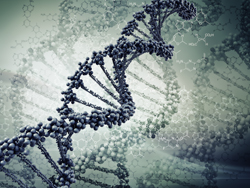Genetic architecture unravelled
Are genes acting more or less independently or are there complex interactions creating systematic patterns that science does not know about? Scientists traditionally believed that genes act independently to a large extent, although molecular biology had been showing some complex gene networks that haven't been fully unmasked. Lately, the most recent research has revealed some surprising results in genetic architecture that cannot be ignored. The EU-funded project 'Statistical Tools for studying genetic architecture' (STSGA) investigated these claims and others through statistical experiments, seeking to improve on classical methods of study. These experiments are important in answering questions in biology, from evolution and population variation to animal and crop improvement. This also includes the ability to predict selection limits and avoid unwanted side effects of artificial selection. To achieve its objectives, the project documented dynamically relevant parameters, combining statistical models with process models in order to improve understanding of genetic architecture. It also examined trait values in subsequent generations within populations subject to controlled artificial selection. The project then looked at quantitative trait loci (QTL) mapping data. The latter involves molecular-marker–based information relating to how differences at particular locations in the genome affect certain traits. STSGA successfully developed software that detects genetic interactions (epistasis) that may hold important evolutionary implications. The project team used this information to analyse QTLs that affect the size of bones and internal organs in mice, demonstrating regular patterns of gene interaction. It also developed a statistical model framework to estimate genetic architecture from artificial selection responses that can be used to describe different genetic architectures. This method is also available in a newly developed software package, rendering future research in this direction more comprehensive and easier. In short, these results and software packages are expected to form the basis for many research publications over the coming years and explain genetic architecture much more accurately. The impact from this on ageing and disease may be profound.







